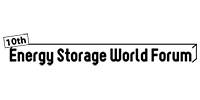 As an increasingly high proportion of energy grids are fed by renewable energy, developing storage solutions that can deal with intermittency in sustainably, safely and cost-effectively is key.
As an increasingly high proportion of energy grids are fed by renewable energy, developing storage solutions that can deal with intermittency in sustainably, safely and cost-effectively is key.
Lithium-ion batteries are still the frontrunner technology for large-scale energy storage, and their benefits are clear — high energy densities, relatively low maintenance and a rapidly dropping cost per kWh. But their drawbacks of limited lifespans, explosive failure modes and potentially precarious chains of component supply are equally well publicized.
What battery technologies and chemistries are making waves for stationary storage applications?
All-Iron Flow Batteries (RFB)
Redox Flow Batteries (RFBs) are hardly a new technology, but have received renewed interest in the past few years as grid energy storage solutions. Benefits include long lifespans, theoretically limitless scalability and long discharge times, however, they have been held back by their drawbacks including low energy densities, expensive component costs and in some cases toxic or dangerous electrolyte materials.
Energy Storage Solutions (ESS) have been working on developing and proving the commercial case for their all-iron flow battery which aims to solve several of these issues. In contrast to Vanadium flow batteries, the electrolyte materials are selected for their abundance, safety and low-cost — salt, iron and water. The battery can be transported “dry” and hydrated on site, also lowering logistics costs and improving mobility.
The non-corrosive electrolyte also allows for cheaper materials to be used for the power stack and other battery components. With a mild electrolyte pH (1 to 4) electrode reaction potential lower than the 0.8V carbon corrosion potential, all-iron flow batteries experience little electrode degradation — ESS’s modules experience minimal performance loss over 20 000+ cycles with approximately 70% peak round trip efficiency.
ESS are testing the business case under a contract with the U.S Army Corps of Engineers, with initial cost estimates at have set an estimated cost for their battery at $500/kWh. At this relatively early stage of development, the cost is certainly not attractive enough to compete with Li-on or even Vanadium flow on a wide scale but could be an ideal solution for smaller and/or remote grids.





